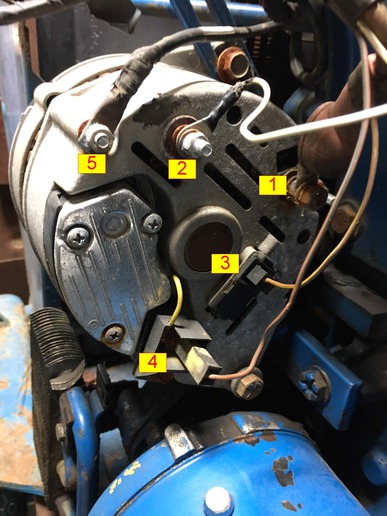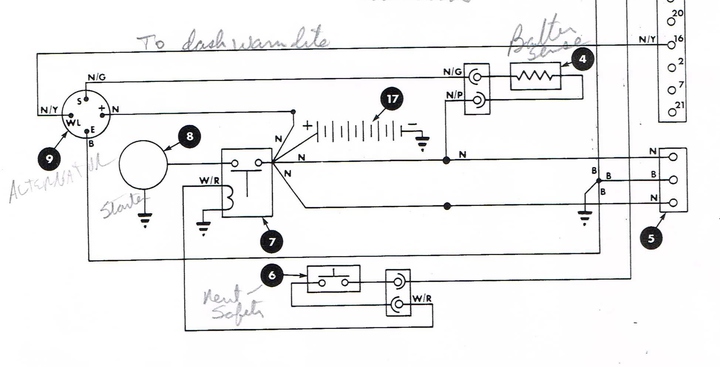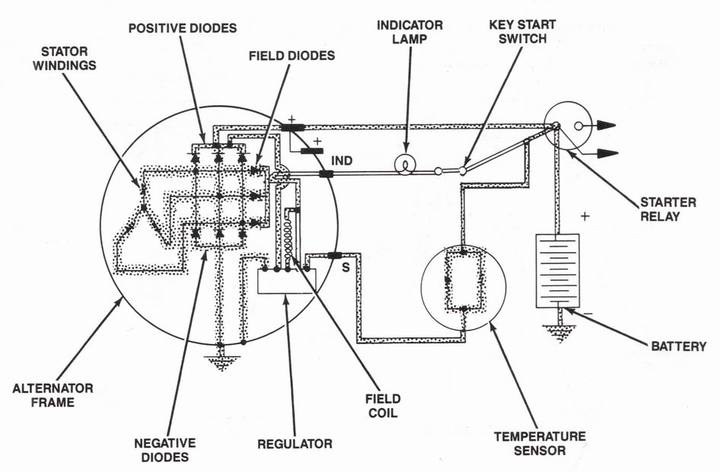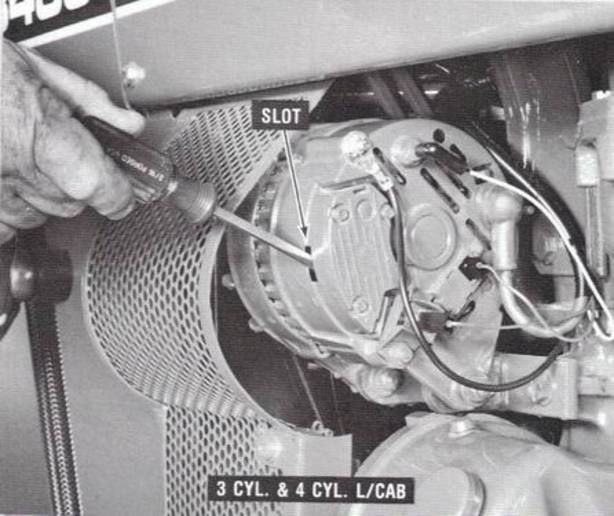fixitforfree
Member
Just bought a Ford 4630. Low hours but been sitting for years. Got it running great but having trouble with charging system. Charge light is on with key on, engine off as it should be. With engine running, charge light is off sometimes, on other times. Voltage while running is 12.44v, same as battery with engine off so it is not charging. Voltage at alternator is 12.44v as well. I do feel a slight magnetic pull on a screwdriver at the back of the alt but it is only slight. Again, this tractor sat for 5+ years uncovered with the hood off so the alternator was rained on a lot. Anyway, have attached a photo below with all the wires labeled to ease the discussion. It might be a bad alternator I realize but I want to know for sure before I start throwing money at it. I bought a full set of OEM Ford New Holland manuals but the schematic for the charging circuit is so small I can't even read the wire colors to help me troubleshoot. Could you guys please use the photo attached with labeled wires to tell me specifically how to test my alternator on my tractor as well as confirm it is wired correctly? I know the previous owner and the alt alledgedly charged fine when the tractor last ran so I assume it is wired correctly but need to confirm so I can get this great tractor back charging again. Thanks for any help you can offer guys.







